Blog
A Note from Rick | Does Your Garden Offer Multi-Season Interest?
By Rick Bogusch
October Garden Advice from Rick
If you’re thinking of making changes to your garden, consider a plan that provides you with beauty and interest in all seasons.
Well-performing native plants are a good place to start. I’m always on the lookout for high performers, and one of my favorites is Amsonia hubrichtii. It’s located near the garden shed here at Bridge Gardens. Now taking on its colorful autumn appearance, this plant begins each spring with bright green feathery mounds that offer blue, star-shaped flowers from late spring to early summer — hence its common name, bluestar. It favors full sun but can tolerate light or open shade very well. Amsonia do well in just about any soil and once established, are drought-tolerant. We also have Amsonia illustris planted under the wisteria arbor. While A. hubrichtii offers an exceptional rainbow of color, A. illustris has a beautiful clear yellow fall color. Both are deer resistant plants which is an important consideration on the East End.
Another good native perennial that offers multi-season interest is Baptisia or false indigo. Baptisia can be found in a multitude of colors depending on the species and variety, and looks great as a feature plant in the perennial bed with its shrub-like habit. Once established, it will reward you with spires of color and offer food for our local pollinators. Flowers, appearing May through June, are followed by attractive seed pods that will last into winter. It grows easily in full sun and is another deer resistant plant.
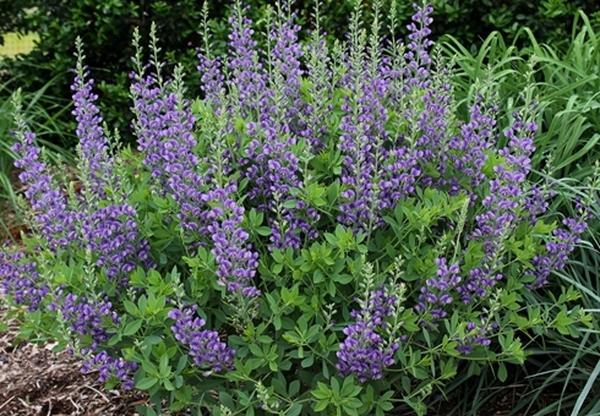
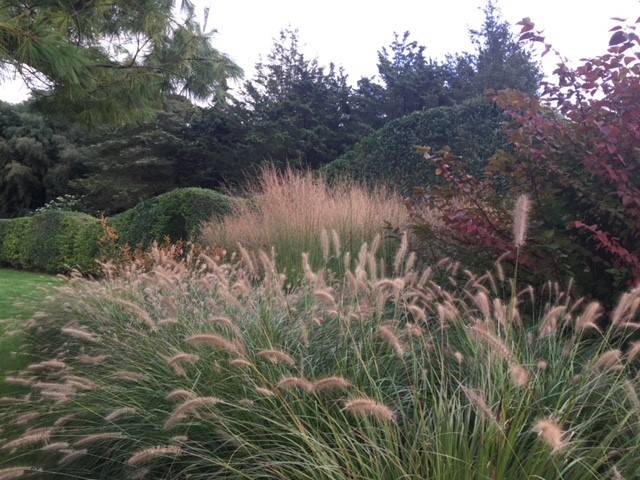
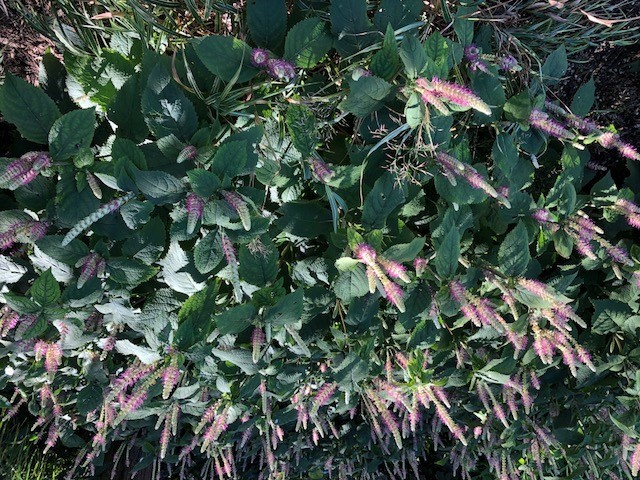
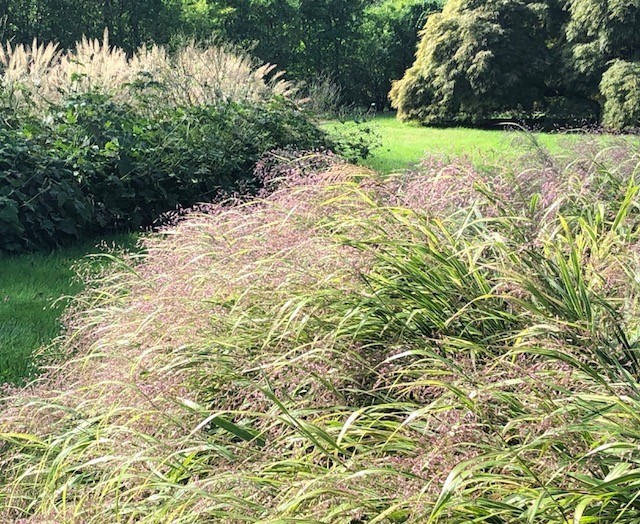
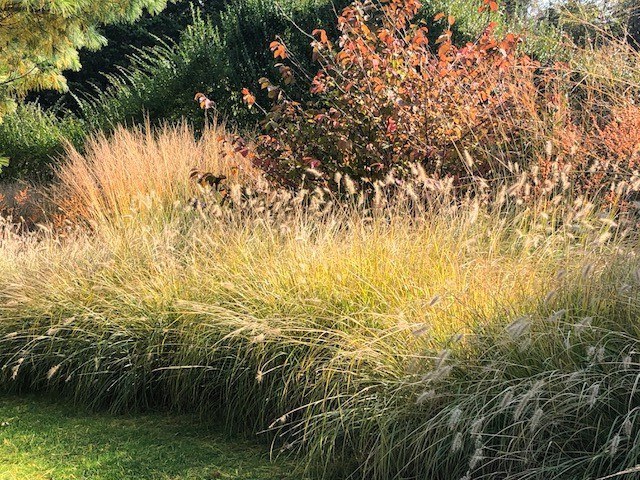
Perennial grasses can be a decorative and sculptural addition to the garden. Often planted in masses, many offer graceful seed heads in Autumn, and can offer food for birds and other wildlife, depending on the species and variety. Among my favorites are fountain grass and Indian grass, although the non-native Japanese forest grass, pictured below right, is eye-catching with its chartreuse leaves that brighten any shade garden. Slow growing in clump form, this variety prefers morning sun to full shade but other varieties will take nearly full sun. Because grasses provide winter interest, shelter for wildlife,and seeds for birds, they are not usually cut back at the end of the season. However, I usually cut back the grasses at Bridge Gardens to minimize the habitat for voles and rabbits.
This year a friend gave me several potted fig trees. Located near our ivy maze, they’ve been producing delicious figs these last few weeks. Because they are doing well in their large pots, I’ll bring these small trees indoors to overwinter. Fig trees can be planted directly in your garden, but you may not get many fruit, depending on the variety you choose and your micro-climate. I recommend visiting your local garden center for recommendations on the most reliable varieties for Long Island. Or, invest in more than one variety to see what does best in your garden.
![block.image[0].title](/assets/images/figs.jpg)
Now is a good time to…
Plant spring-flowering bulbs! There’s nothing more welcome after winter’s dreary days than seeing the color of early spring blossoms. Bulbs should be purchased now and planted before heavy frost to allow roots to be established.
Divide perennials. Dividing your plants encourages good health, manages plants that have grown too large for their space, and helps reduce competition for water with adjacent plants. It’s also a great way to expand and fill in the garden without spending a dime.
Plant new perennials, shrubs, and trees. If you’ve had your eye on some new perennials, shrubs or trees, now is a great time to buy. Many shrubs and trees can be planted even when dormant, as long as soil isn’t too frozen to dig.
Plant vegetables like spinach, arugula, radishes, leaf lettuce, baby kale and miner’s lettuce for late season harvest. These vegetables tolerate autumn’s cold snaps and continue to provide you with fresh food.
When you visit this month, take time to walk through our 4-quadrant herb garden. While we often think of October as the end of the season, there’s much still happening here. Each quadrant — culinary, medicinal, textile/dye and ornamental — will give you ideas for what you can plant to enjoy in the next growing season!
Many people I speak with, novice to experienced gardeners alike, seek reliable information about creating a landscape with interest in the “off season.” True 4-season plants are most often woody plants that have attractive bark and/or a sculptural shape and attractive silhouette in winter. These include weeping Japanese maple, Edgeworthia, American hollies, rhododendrons and of course evergreens. One good resource I’ve found is Wonders of the Winter Landscape: Shrubs and Trees to Brighten the Cold-Weather Garden by Vincent Simeone. I recommend it.

